-
 Bitcoin
Bitcoin $106,754.6083
1.33% -
 Ethereum
Ethereum $2,625.8249
3.80% -
 Tether USDt
Tether USDt $1.0001
-0.03% -
 XRP
XRP $2.1891
1.67% -
 BNB
BNB $654.5220
0.66% -
 Solana
Solana $156.9428
7.28% -
 USDC
USDC $0.9998
0.00% -
 Dogecoin
Dogecoin $0.1780
1.14% -
 TRON
TRON $0.2706
-0.16% -
 Cardano
Cardano $0.6470
2.77% -
 Hyperliquid
Hyperliquid $44.6467
10.24% -
 Sui
Sui $3.1128
3.86% -
 Bitcoin Cash
Bitcoin Cash $455.7646
3.00% -
 Chainlink
Chainlink $13.6858
4.08% -
 UNUS SED LEO
UNUS SED LEO $9.2682
0.21% -
 Avalanche
Avalanche $19.7433
3.79% -
 Stellar
Stellar $0.2616
1.64% -
 Toncoin
Toncoin $3.0222
2.19% -
 Shiba Inu
Shiba Inu $0.0...01220
1.49% -
 Hedera
Hedera $0.1580
2.75% -
 Litecoin
Litecoin $87.4964
2.29% -
 Polkadot
Polkadot $3.8958
3.05% -
 Ethena USDe
Ethena USDe $1.0000
-0.04% -
 Monero
Monero $317.2263
0.26% -
 Bitget Token
Bitget Token $4.5985
1.68% -
 Dai
Dai $0.9999
0.00% -
 Pepe
Pepe $0.0...01140
2.44% -
 Uniswap
Uniswap $7.6065
5.29% -
 Pi
Pi $0.6042
-2.00% -
 Aave
Aave $289.6343
6.02%
Will the moving average system fall when it is in a short position for the first time? What exceptions need to be vigilant?
The moving average system may produce false signals during initial short trades due to market volatility, lagging indicators, and sudden sentiment shifts.
Jun 15, 2025 at 02:35 pm
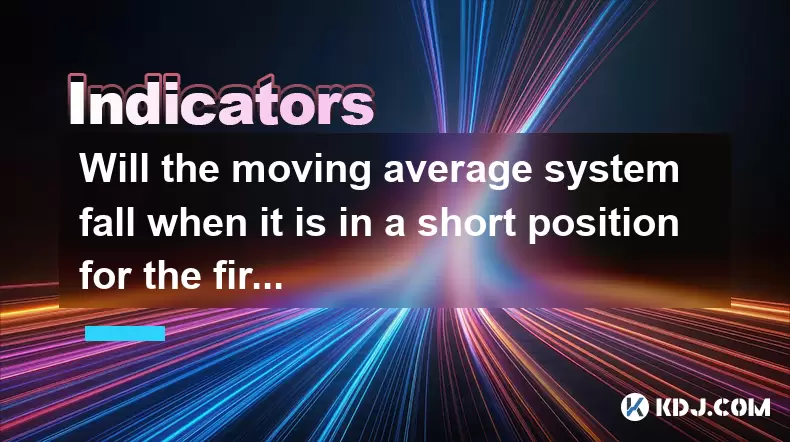
Understanding the Moving Average System in a Short Position
When traders enter a short position for the first time using a moving average system, there is often uncertainty about how the strategy will perform under real market conditions. The moving average, commonly used as a trend-following indicator, can behave unpredictably during initial short trades due to various factors such as market volatility, lagging signals, and false breakouts.
The first-time short entry may not always yield favorable results because moving averages inherently follow price rather than predict it. As a result, entering a short trade based solely on a moving average crossover might lead to losses if the market doesn't continue in the expected direction.
Key Point: The moving average system may fall or produce false signals when used for the first short trade due to its reactive nature.
How Does a Moving Average System Work in a Short Setup?
A typical moving average system involves plotting one or more moving averages (like the 50-period and 200-period) on a chart. Traders often go short when the shorter-term average crosses below the longer-term average — a signal known as the "death cross." However, this setup assumes that the trend will continue downward after the crossover.
In practice, especially during the initial short trade, the market may not react as anticipated. For example:
- Price might rebound quickly, nullifying the signal.
- Volume could be low, indicating lack of conviction among sellers.
- Market sentiment might shift suddenly, causing a reversal.
These scenarios illustrate why the system may appear to "fall" or underperform when applied for the first time in a short-selling context.
Exceptions That Can Cause Failure in the First Short Trade
There are several exceptions and pitfalls to watch out for when initiating a short position with a moving average system for the first time:
- False Breakdowns: Markets often fake a downtrend before resuming an uptrend, trapping traders who entered short positions prematurely.
- Whipsaws: Rapid price movements back and forth can trigger multiple entries and exits, leading to confusion and losses.
- Lack of Confirmation: Relying only on moving averages without confirmation from other indicators like RSI or MACD can increase the risk of wrong trades.
- Overbought Conditions: Entering a short position just because the price is above a moving average while the asset is already oversold may not be reliable.
- News Events: Unexpected news can override technical signals, making moving average strategies ineffective temporarily.
Each of these exceptions should be monitored closely when executing a first-time short trade using a moving average system.
Steps to Improve Performance in First-Time Short Entries
To enhance the effectiveness of the moving average system in first-time short setups, consider the following steps:
- Use Multiple Timeframes: Analyze both higher and lower timeframes to confirm the trend and avoid premature entries.
- Add Volume Filters: Look for increasing volume on breakdowns to ensure that selling pressure is genuine.
- Incorporate Oscillators: Use tools like RSI or Stochastic to confirm overbought conditions before going short.
- Wait for Retests: Don’t rush into a short trade immediately after a crossover; wait for price to retest the moving average for stronger confirmation.
- Set Tight Stop Losses: Protect capital by placing stop losses close to recent swing highs to minimize risk on uncertain entries.
By integrating additional filters and waiting for clearer signals, traders can reduce the likelihood of the moving average system failing during the first short trade.
Backtesting the Moving Average Strategy for Short Trades
Before applying any moving average-based strategy in live markets, especially for the first short position, it's crucial to perform thorough backtesting. This process involves testing the system on historical data to see how it would have performed under past market conditions.
During backtesting, focus on:
- Historical Volatility: Test across different volatility environments to understand how the system behaves in choppy vs. trending markets.
- Timeframe Sensitivity: Check performance on multiple timeframes (e.g., 1-hour, 4-hour, daily) to find optimal settings.
- Asset Class Differences: Apply the strategy across various cryptocurrencies to identify which assets respond best to moving average signals.
- Parameter Optimization: Adjust moving average lengths (e.g., 9 EMA vs. 21 EMA) to see what yields better results.
- Psychological Factors: Simulate trading behavior to assess how well you stick to the rules under pressure.
This preparation helps traders anticipate potential failures and improve their confidence when entering a short position for the first time.
Frequently Asked Questions
Q: Can I use a single moving average for short trades instead of multiple?
Yes, some traders use a single moving average (e.g., price closing below a 50-period SMA) to initiate short trades. However, relying on a single line increases the risk of false signals, so combining it with other tools like support/resistance levels or candlestick patterns is recommended.
Q: Should I always wait for a retest before entering a short position?
While not mandatory, waiting for a retest significantly improves the probability of success. It confirms that the moving average is acting as resistance, increasing the likelihood of a successful short trade.
Q: What is the best cryptocurrency pair to test a moving average short strategy on?
Pairs with strong trends and high liquidity are ideal. BTC/USDT and ETH/USDT are popular choices due to their volatility and consistent movement, making them suitable for testing moving average strategies.
Q: How do I know if a moving average signal is strong enough to act on?
Look for confluence with other indicators (e.g., bearish divergence on RSI), increased volume, and clear rejection at key levels. These factors add strength to the moving average signal and reduce the chance of failure.
Disclaimer:info@kdj.com
The information provided is not trading advice. kdj.com does not assume any responsibility for any investments made based on the information provided in this article. Cryptocurrencies are highly volatile and it is highly recommended that you invest with caution after thorough research!
If you believe that the content used on this website infringes your copyright, please contact us immediately (info@kdj.com) and we will delete it promptly.
- 2025-W Uncirculated American Gold Eagle and Dr. Vera Rubin Quarter Mark New Products
- 2025-06-13 06:25:13
- Ruvi AI (RVU) Leverages Blockchain and Artificial Intelligence to Disrupt Marketing, Entertainment, and Finance
- 2025-06-13 07:05:12
- H100 Group AB Raises 101 Million SEK (Approximately $10.6 Million) to Bolster Bitcoin Reserves
- 2025-06-13 06:25:13
- Galaxy Digital CEO Mike Novogratz Says Bitcoin Will Replace Gold and Go to $1,000,000
- 2025-06-13 06:45:13
- Trust Wallet Token (TWT) Price Drops 5.7% as RWA Integration Plans Ignite Excitement
- 2025-06-13 06:45:13
- Ethereum (ETH) Is in the Second Phase of a Three-Stage Market Cycle
- 2025-06-13 07:25:13
Related knowledge

How to confirm the effectiveness of the average price line support in the time-sharing chart?
Jun 17,2025 at 12:56am
Understanding the Time-Sharing Chart and Its RelevanceIn cryptocurrency trading, time-sharing charts play a crucial role in analyzing short-term price movements. These charts typically display price fluctuations over a specific period, often ranging from minutes to hours. Traders rely on them to make quick decisions based on real-time data. The average ...

What does it mean when the momentum indicator breaks above the zero axis?
Jun 17,2025 at 12:43am
Understanding the Momentum IndicatorThe momentum indicator is a technical analysis tool used to measure the speed or velocity of price movements in cryptocurrency markets. It helps traders identify potential trend reversals, overbought or oversold conditions, and confirms existing trends. The indicator typically oscillates around a zero line, with value...
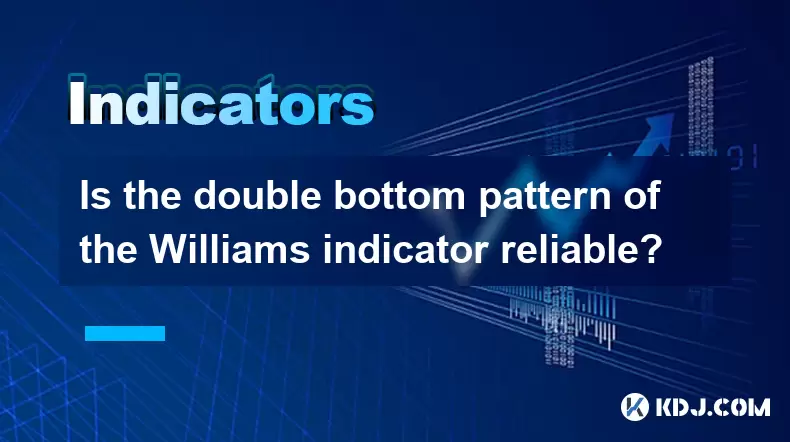
Is the double bottom pattern of the Williams indicator reliable?
Jun 17,2025 at 03:56am
Understanding the Williams Indicator and Its SignificanceThe Williams %R indicator, often referred to as Williams Percent Range, is a momentum oscillator used in technical analysis to identify overbought or oversold conditions in the market. Developed by Larry Williams, this indicator fluctuates between 0 and -100, with readings above -20 indicating ove...
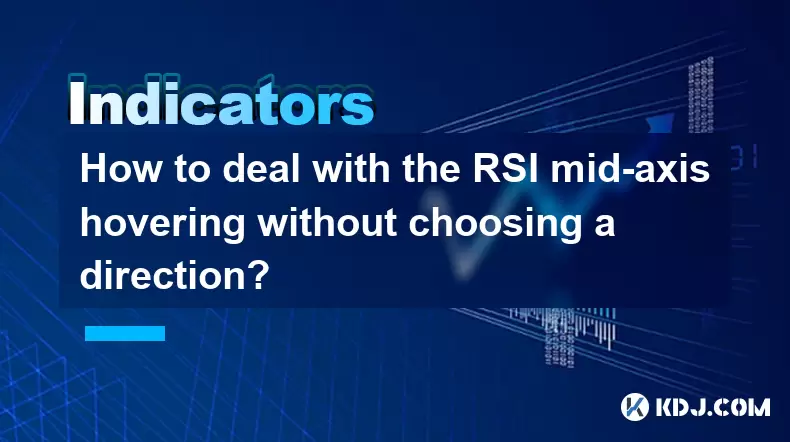
How to deal with the RSI mid-axis hovering without choosing a direction?
Jun 17,2025 at 02:02am
Understanding RSI Mid-Axis Hovering in Cryptocurrency TradingThe Relative Strength Index (RSI) is a popular momentum oscillator used by traders to assess whether an asset is overbought or oversold. In cryptocurrency markets, it's common for the RSI to hover around its mid-axis, typically at the 50 level, without showing a clear upward or downward trend....
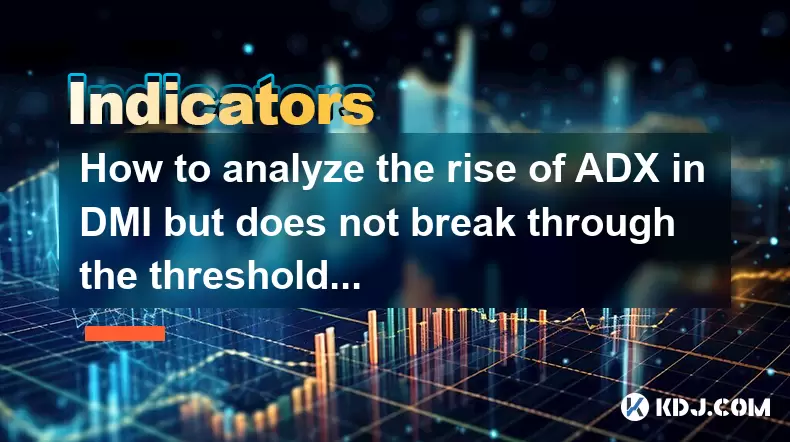
How to analyze the rise of ADX in DMI but does not break through the threshold?
Jun 16,2025 at 11:49pm
Understanding ADX and DMI in Cryptocurrency TradingIn cryptocurrency trading, ADX (Average Directional Index) is a technical indicator used to measure the strength of a trend. It works in conjunction with the DMI (Directional Movement Indicator), which includes two components: +DI (Positive Directional Indicator) and -DI (Negative Directional Indicator)...
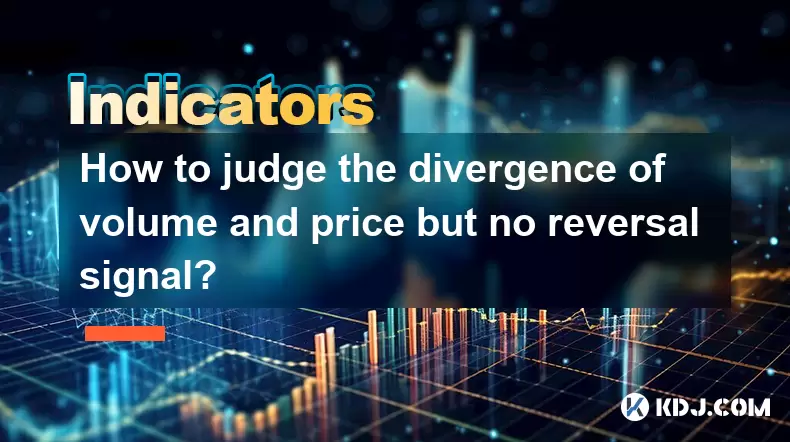
How to judge the divergence of volume and price but no reversal signal?
Jun 17,2025 at 12:28am
Understanding Volume and Price DivergenceIn the world of cryptocurrency trading, volume and price are two key indicators that traders monitor closely. Divergence occurs when these two metrics move in opposite directions. For example, if the price of a cryptocurrency is rising but its volume is declining, this could signal weakening momentum. However, it...

How to confirm the effectiveness of the average price line support in the time-sharing chart?
Jun 17,2025 at 12:56am
Understanding the Time-Sharing Chart and Its RelevanceIn cryptocurrency trading, time-sharing charts play a crucial role in analyzing short-term price movements. These charts typically display price fluctuations over a specific period, often ranging from minutes to hours. Traders rely on them to make quick decisions based on real-time data. The average ...

What does it mean when the momentum indicator breaks above the zero axis?
Jun 17,2025 at 12:43am
Understanding the Momentum IndicatorThe momentum indicator is a technical analysis tool used to measure the speed or velocity of price movements in cryptocurrency markets. It helps traders identify potential trend reversals, overbought or oversold conditions, and confirms existing trends. The indicator typically oscillates around a zero line, with value...

Is the double bottom pattern of the Williams indicator reliable?
Jun 17,2025 at 03:56am
Understanding the Williams Indicator and Its SignificanceThe Williams %R indicator, often referred to as Williams Percent Range, is a momentum oscillator used in technical analysis to identify overbought or oversold conditions in the market. Developed by Larry Williams, this indicator fluctuates between 0 and -100, with readings above -20 indicating ove...

How to deal with the RSI mid-axis hovering without choosing a direction?
Jun 17,2025 at 02:02am
Understanding RSI Mid-Axis Hovering in Cryptocurrency TradingThe Relative Strength Index (RSI) is a popular momentum oscillator used by traders to assess whether an asset is overbought or oversold. In cryptocurrency markets, it's common for the RSI to hover around its mid-axis, typically at the 50 level, without showing a clear upward or downward trend....

How to analyze the rise of ADX in DMI but does not break through the threshold?
Jun 16,2025 at 11:49pm
Understanding ADX and DMI in Cryptocurrency TradingIn cryptocurrency trading, ADX (Average Directional Index) is a technical indicator used to measure the strength of a trend. It works in conjunction with the DMI (Directional Movement Indicator), which includes two components: +DI (Positive Directional Indicator) and -DI (Negative Directional Indicator)...

How to judge the divergence of volume and price but no reversal signal?
Jun 17,2025 at 12:28am
Understanding Volume and Price DivergenceIn the world of cryptocurrency trading, volume and price are two key indicators that traders monitor closely. Divergence occurs when these two metrics move in opposite directions. For example, if the price of a cryptocurrency is rising but its volume is declining, this could signal weakening momentum. However, it...
See all articles

























































































